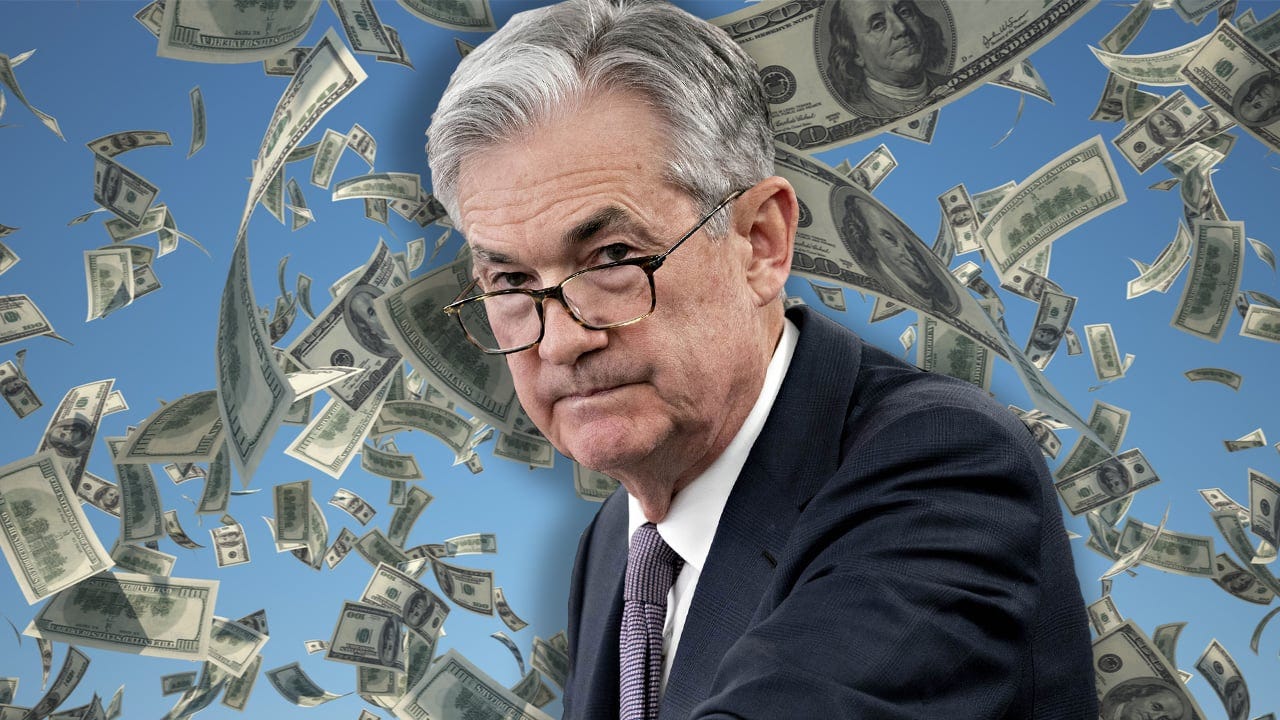Quantitative Easing
The Lifeline of a Dying System
First, we print. Then, we pretend it’s temporary.
That’s the essence of Quantitative Easing (QE), the financial morphine that has kept the modern monetary system alive since 2008. It was sold as an emergency measure, deployed “just this once” to stabilize markets after the Great Financial Crisis. But like every government intervention, once the drug hit the bloodstream, the system couldn’t go without it. Now, after a brief detox, QE is waiting in the wings again, ready to make its comeback when Jerome Powell’s replacement takes the helm in 2026.
What Exactly Is Quantitative Easing?
QE is a polite term for monetizing debt. The central bank creates new money, digitally, not printed, and uses it to buy financial assets (usually government bonds, sometimes mortgage-backed securities or corporate debt). The idea is simple: flood the system with liquidity, push interest rates lower, and force investors out on the risk curve. Stocks go up, bond yields go down, and everyone feels richer.
The problem? It’s not wealth creation. It’s wealth illusion.
The Origins: Japan, 2001: The First Experiment
QE wasn’t born in the United States. It began in Japan in 2001, when the Bank of Japan tried to escape deflation after its property and stock bubbles imploded in the 1990s. They called it “Quantitative Easing”, increasing the quantity of bank reserves rather than adjusting the price (interest rate). It didn’t work. Growth stagnated, debt ballooned, and Japan entered a decades-long monetary coma. But when 2008 hit, the Federal Reserve borrowed the playbook, and then supercharged it.
The Federal Reserve’s QE: 2008–2022
QE1 (2008): Bernanke’s rescue operation. The Fed bought toxic mortgage bonds to save the banks. QE2 (2010): They doubled down, buying Treasuries to “stimulate” growth. Operation Twist (2011): Instead of expanding the balance sheet, the Fed swapped short-term bonds for long-term ones, “twisting” the yield curve to drive down long-term borrowing costs. QE3 (2012-2014): The “infinite” QE. $85 billion a month, no end date. Then came COVID. In 2020, Powell unleashed the nuclear option, QE Infinity, buying everything from Treasuries to corporate ETFs. The balance sheet exploded from $4 trillion to nearly $9 trillion in months.
Markets soared. Inflation followed.
What QE Really Does
QE doesn’t create real productivity, innovation, or sustainable growth. It creates asset inflation. It rewards those closest to the money printer, the financial elite, leveraged corporations, and governments addicted to cheap debt.
The results:
Record inequality.
Zombie companies surviving only on cheap credit.
Asset bubbles in everything from stocks to real estate to NFTs.
Currency debasement disguised as “price stability”.
QE’s defenders claim it prevents crises. In reality, it merely postpones them, by making the eventual collapse even larger.
The Pause That Isn’t
Since 2022, the Fed has been running Quantitative Tightening (QT), the supposed reversal of QE. But QT is a mirage. The Fed may let some bonds mature, but when the next shock hits, whether it’s a market crash, debt ceiling panic, or geopolitical escalation, the printing press will roar back to life.
The U.S. government now spends $1 trillion every 100 days it doesn’t have. Someone must buy that debt. When foreign demand dries up, the Fed steps in, under a new name, with new rhetoric, but the same mechanism.
QE will return not because it’s “effective”, but because there’s no alternative.
The Future: QE as Fiscal Policy
The next phase of QE won’t be about “monetary policy”. It will be about funding government directly, modern monetary theory in practice, not theory.
When Powell is replaced in 2026, likely by a compliant bureaucrat willing to “coordinate” with Treasury, the line between fiscal and monetary will disappear entirely. QE will evolve into Permanent Debt Monetization:
The Fed will cap yields.
The Treasury will run unlimited deficits.
Inflation will be normalized as “growth”.
This is not speculation. It’s the logical endgame of a system drowning in debt.
The Investment Playbook for the QE Regime
QE distorts price discovery, so investors must think in distortions:
Hard Assets: Gold, silver, Bitcoin, scarcity can’t be printed.
Energy: The real economy still runs on oil and gas, not liquidity.
Quality Equities: Productive companies with pricing power.
Avoid Bonds: Holding government IOUs in a debasement cycle is financial suicide.
QE’s return will bring another asset boom, the final melt-up before the system resets.
The Endgame: Sound Money or System Reset
We are in the late stages of what Strauss and Howe called The Fourth Turning, the cyclical crisis that ends one institutional order and births another. Every fiat system eventually fails under the weight of its own promises. QE is not a tool of prosperity; it’s a symptom of decay. It buys time, but not solvency. The next iteration, QE for all, UBI for stability, yield control for “fairness”, will be the crescendo.
And when it collapses, what rises from the ashes will be simple: sound money, discipline, and productive enterprise. Until then, the Fed will keep printing, governments will keep spending, and markets will keep pretending.


